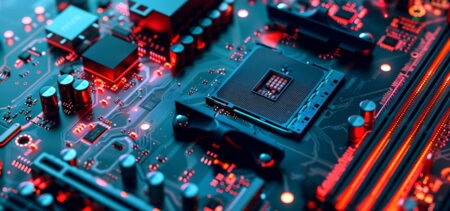Augmented Reality (AR) is an innovative technology that creates a captivating and immersive experience for users. By overlaying virtual objects, sound, or sensory stimuli onto the real environment, AR revolutionizes how we interact with technology.
For example, IKEA was one of the first brands to take advantage of the capabilities of AR, seamlessly integrating this technology into users’ online shopping experience. Their app allows users to choose any item from their catalog and observe it in their home at the correct scale, instantly allowing shoppers to establish whether the item would fit in their space.
That said, these practical applications of AR are becoming increasingly crucial in today’s rapidly evolving technological landscape. From enhancing everyday experiences to transforming entire industries, AR’s real-world applications hold the potential to reshape the way we live, work, and interact with the world around us.
In this article, we will look into the fascinating technology called augmented reality and explore its diverse and transformative applications across various sectors.
What Is Augmented Reality?
Augmented reality can be defined as an advanced technology that superimposes computer-generated content onto the real-world environment. Through specialized devices such as smartphones, tablets, AR glasses, or wearable gadgets, virtual elements are seamlessly integrated into the user’s physical surroundings. This blending of digital and real-world elements creates an interactive and enhanced experience that enriches our perception of the environment.
Unlike virtual reality (VR), which immerses users in entirely computer-generated environments, AR enhances the existing world with additional information or digital objects. While VR creates a simulated reality, AR adds new layers of context to the real world, allowing users to interact with both virtual and physical elements simultaneously. This unique characteristic has opened up a multitude of practical applications, making AR a powerful tool across various industries and aspects of our daily lives. As we explore further, we will witness how this cutting-edge technology is shaping the future and transforming the way we perceive and interact with our reality.
How Augmented Reality Works
Augmented reality operates on a sophisticated blend of cutting-edge technology, seamless device integration, and real-time data processing. Understanding the intricacies of how AR works reveals the magic behind its captivating experiences.
Explanation of AR Technology and Devices
AR relies on a combination of specialized devices and software applications. Smartphones and tablets serve as common platforms, leveraging their built-in cameras, sensors, and processing power to overlay digital elements onto the real world. AR glasses and wearable gadgets, like smartwatches, offer hands-free and immersive experiences, allowing users to interact more naturally with content.
Tracking and Mapping Techniques
To ensure precise and accurate placement of virtual objects in the real world, AR systems employ advanced tracking and mapping techniques. Visual-based trailing uses the device’s camera to analyze the environment continually, identifying key features and landmarks to anchor the virtual content. Additionally, sensor-based tracking utilizes gyroscopes, accelerometers, and depth sensors to understand the device’s position and orientation in real-time, providing seamless interaction between the user and AR elements.
Rendering Digital Content in Real-Time
AR’s rendering capabilities are a remarkable feat. As users move and interact with the environment, the device must instantaneously process and integrate virtual elements into the live video feed. This process demands significant computational power and efficiency to deliver a smooth and responsive experience. Thanks to advancements in hardware and software, AR can now render complex digital content in real-time, creating realistic and immersive overlays that seamlessly blend with the physical world.
Key Components of Augmented Reality
The backbone of AI technology comprises multiple essential components that work harmoniously to deliver captivating and immerse experiences. Let’s explore these key components in detail.
Display Devices: Smartphones, AR Glasses, and Wearable Gadgets
Display devices serve as the primary medium through which users engage with AR content. Smartphones and tablets offer widespread accessibility, enabling users to experience augmented reality through familiar handheld devices. AR glasses and wearable gadgets, on the other hand, provide a more immersive and hands-free experience.
Sensors and Cameras: Capturing Real-World Data
Sensors and cameras are instrumental in gathering real-world data, a crucial aspect of AR technology. Cameras capture the user’s surroundings, providing a live video feed that acts as a canvas for overlaying virtual content. This continuous stream of real-world data is essential for accurate tracking and anchoring of virtual objects, ensuring a seamless and responsive AR experience.
Real-World Applications of Augmented Reality
Augmented reality has rapidly expanded its influence across various industries, and its practical applications have opened up new possibilities in diverse fields. Let’s explore some exciting real-world applications of AR.
AR in Retail
In the retail sector, AR is redefining the shopping experience. Through virtual try-ons, customers can visualize products like clothing, accessories, and cosmetics in real-time, eliminating the need for physical fitting rooms. Product visualization, on the other hand, allows shoppers to place virtual furniture or decor in their homes, enabling them to make informed purchase decisions.
AR in Education
Interactive learning tools provide students with hands-on experiences, allowing them to explore complex subjects in a captivating manner. For example, virtual field trips transport classrooms to historical sites, natural wonders, and distant places, making learning more engaging and accessible. Educational simulations can also offer practical training experiences for various professions, including science, engineering, and medical fields.
AR in Healthcare
In the healthcare sector, AR is revolutionizing medical practices and patient care. Surgeons have started using AR for surgical planning, superimposing 3D models onto patients’ anatomy to improve precision and outcomes. Medical professionals especially benefit from AR-based training, allowing them to practice procedures in virtual environments before performing them on patients.
AR in Architecture and Design
AR has overcome common obstacles faced by architects and designers. By overlaying virtual building models onto physical spaces, professionals can visualize structures in real-world contexts, aiding in better design decisions. AR also enhances interior design, as clients can preview furniture and decor in their spaces before finalizing purchases. Additionally, augmented reality can offer aid in construction planning, offering on-site information and real-time project updates.
AR in Gaming and Entertainment
Immersive gaming experiences blend virtual elements with real environments, allowing players to interact with digital characters and objects in their physical surroundings. AR-based apps and storytelling create captivating and interactive narratives, blurring the line between fiction and reality. From interactive art installations to AR-enhanced live performances, entertainment industries are leveraging augmented reality to captivate audiences in unique ways.
The Future of Augmented Reality
As AR continues to evolve, its capabilities are expected to reach new heights, opening up a world of possibilities. Let’s take a look at what the future may hold for this groundbreaking technology.
Advancements in AR Technology and its Potential Impact
AR technology is on a rapid trajectory of growth and refinement. As hardware becomes more sophisticated and computational power increases, AR devices are expected to become more compact, affordable, and user-friendly. Enhanced displays, improved tracking capabilities, and increased realism in rendering digital content will elevate the AR experience to unprecedented levels.
The impact of these advancements will be felt across industries and everyday life. AR’s seamless integration with real-world environments will enhance productivity, facilitate information access, and revolutionize the way we interact with digital content. From transforming education and healthcare to revolutionizing retail and entertainment, AR’s potential impact on various sectors is boundless.
Potential Integration with Other Emerging Technologies
AR’s convergence with other emerging technologies holds exciting possibilities. The fusion of AR with Artificial Intelligence (AI) could enable intelligent context-aware AR applications that adapt to users’ needs and preferences in real-time. Combining AR with Internet of Things (IoT) devices could also create a connected ecosystem, where physical objects interact with virtual overlays, enhancing automation and data analytics.
Additionally, the integration of AR with 5G technology would enable high-speed data transmission, reducing latency, and unlocking new capabilities for AR applications. Augmented reality could also play a significant role in the development of mixed reality experiences, bridging the gap between AR and VR, creating immersive and dynamic environments.
The Bottom Line
The future of augmented reality is a compelling journey of innovation and transformation. With continuous advancements in technology and the potential integration with other cutting-edge technologies, AR is poised to reshape the way we perceive and interact with our reality. From revolutionizing industries and boosting productivity to enriching our daily lives with immersive experiences, AR’s potential impact is profound.
As we eagerly anticipate the unfolding of this technology’s potential, it is clear that augmented reality is more than just a passing trend. It is a transformative force that will bring us closer to a future where the physical and digital worlds blur into a harmonious blend of experiences. The journey of augmented reality has only just begun, and its future holds boundless opportunities for innovation, creativity, and discovery.















































